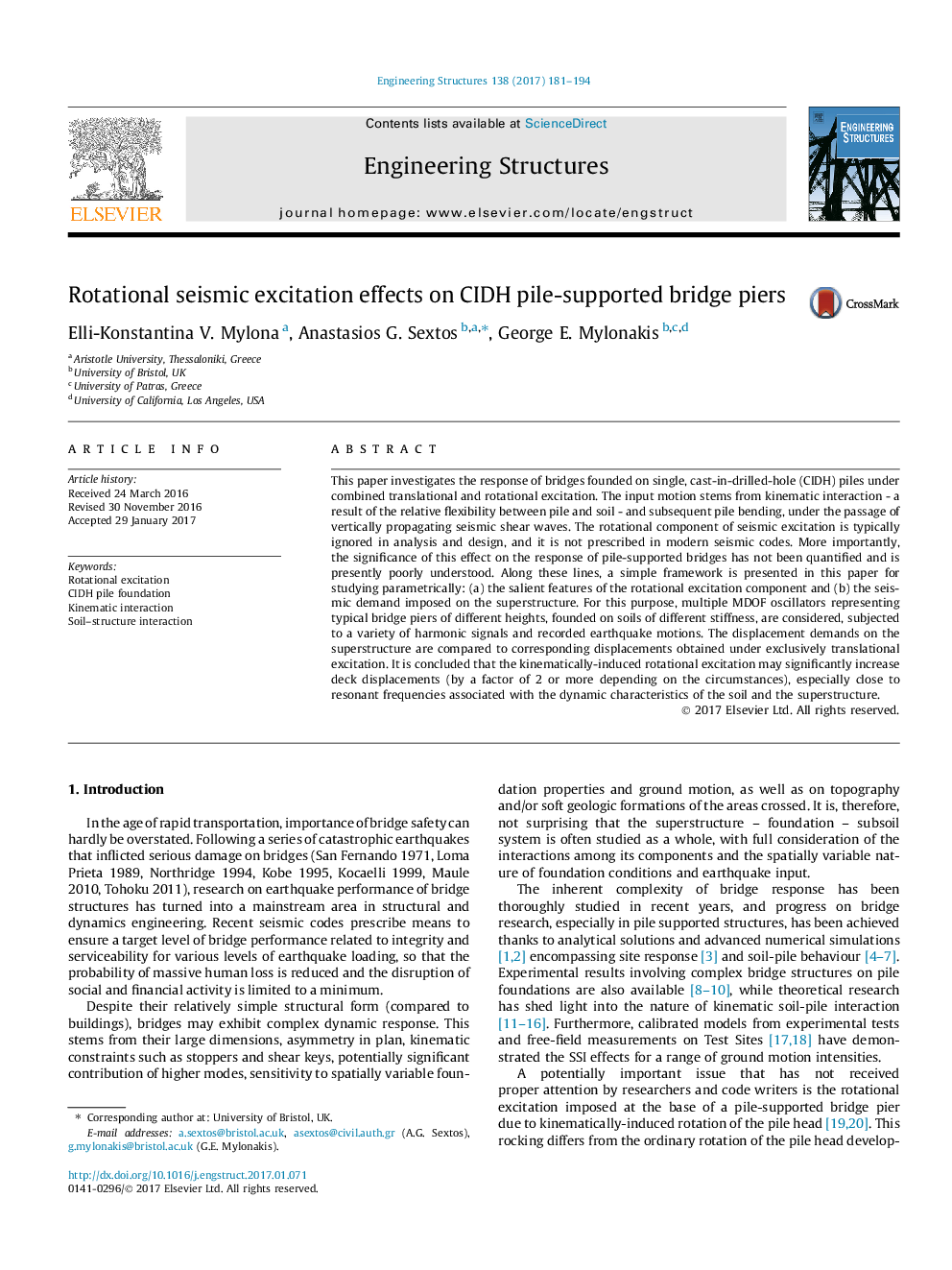| Article ID | Journal | Published Year | Pages | File Type |
|---|---|---|---|---|
| 4920324 | Engineering Structures | 2017 | 14 Pages |
Abstract
This paper investigates the response of bridges founded on single, cast-in-drilled-hole (CIDH) piles under combined translational and rotational excitation. The input motion stems from kinematic interaction - a result of the relative flexibility between pile and soil - and subsequent pile bending, under the passage of vertically propagating seismic shear waves. The rotational component of seismic excitation is typically ignored in analysis and design, and it is not prescribed in modern seismic codes. More importantly, the significance of this effect on the response of pile-supported bridges has not been quantified and is presently poorly understood. Along these lines, a simple framework is presented in this paper for studying parametrically: (a) the salient features of the rotational excitation component and (b) the seismic demand imposed on the superstructure. For this purpose, multiple MDOF oscillators representing typical bridge piers of different heights, founded on soils of different stiffness, are considered, subjected to a variety of harmonic signals and recorded earthquake motions. The displacement demands on the superstructure are compared to corresponding displacements obtained under exclusively translational excitation. It is concluded that the kinematically-induced rotational excitation may significantly increase deck displacements (by a factor of 2 or more depending on the circumstances), especially close to resonant frequencies associated with the dynamic characteristics of the soil and the superstructure.
Related Topics
Physical Sciences and Engineering
Earth and Planetary Sciences
Geotechnical Engineering and Engineering Geology
Authors
Elli-Konstantina V. Mylona, Anastasios G. Sextos, George E. Mylonakis,
